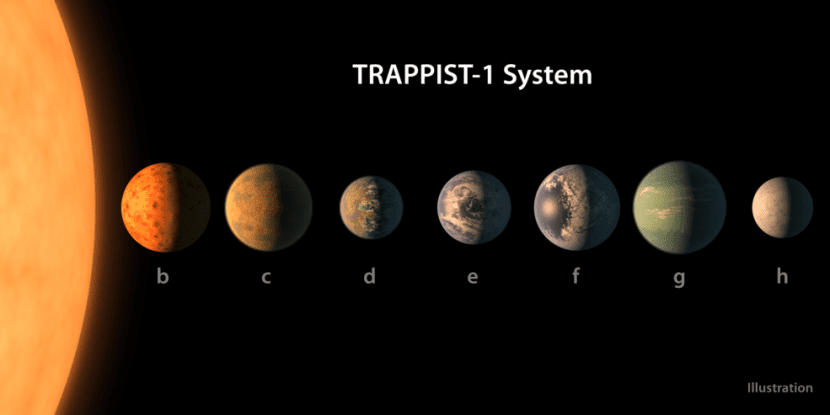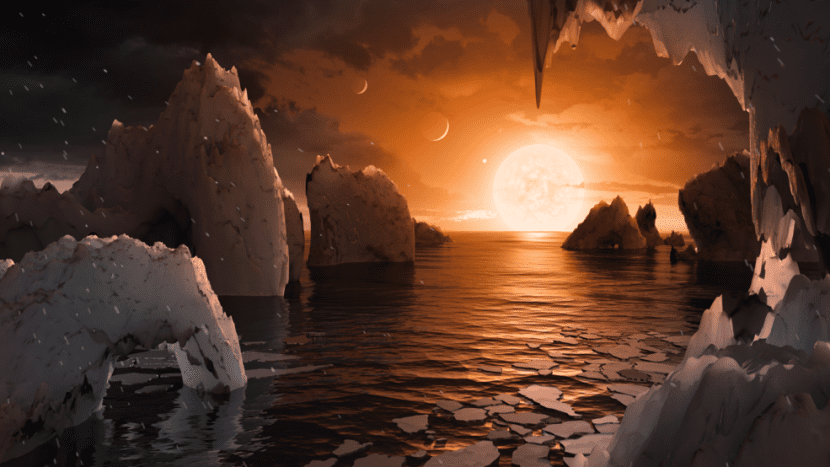
Image - NASA
It has happened: humanity, or more specifically, NASA has found neither more nor less than seven rocky planets similar to Earth, which could mean that some of them could have liquid water and, who knows, maybe life.
The discovery is, without any doubt, one of the most important in our recent history, since now more than ever we could be close to knowing if we are alone in the Universe or if we really share it with other beings.
One of NASA's telescopes discovered a solar system with seven rocky planets on Wednesday, February 22, 2017. The star around which they orbit has been "christened" TRAPPIST-1, and the planets as b, c, d, e, f, g, h. These rocky globes, although they have not been able to see them directly, Scientists have deduced its existence from its size and mass by how the star's brightness decreases every time one of the stars comes between it and Earth..
In three of them -e, f, g- there could be life to be found in the habitable zone of the starIn other words, where the temperature is adequate for there to be liquid water. Planets b, c, and d are too close to the star, so it is probably too hot, and planet h, which is the farthest away, is most likely too cold. Still, scientists don't rule out any: Michaël Gillon of NASA said that »there could be water in any of them».

Image - NASA
This amazing Solar System is located 40 million light years from Earth, in the constellation Aquarius, and is planet f the best candidate to host life. It is very similar in size to our planet and takes nine days to go around its star. So the imagination has done nothing but skyrocket. What would it be like to live there?
Amaury Triaud, co-author of the research, from the Cambridge Institute of Astronomy (UK) said that "to be there at noon would be like here at sunset. It would be beautiful because every so often another planet would pass through the sky that would look twice as big as the moon». Even so, a terrestrial year would last nine days, and it is a solar system that we could define as "pocket".
The star Trappist-1 is an ultracold dwarf that has a radius equivalent to 12% of the Sun and a surface temperature of about 2300ºC, compared to 5500ºC for our star king. For this reason, the surface temperature of planet f is probably several degrees lower than we have here (14-15 ° C).
Nevertheless, it is the only one that has enough mass to retain an atmosphere, which is essential for life.
If you want to know more, Click here.